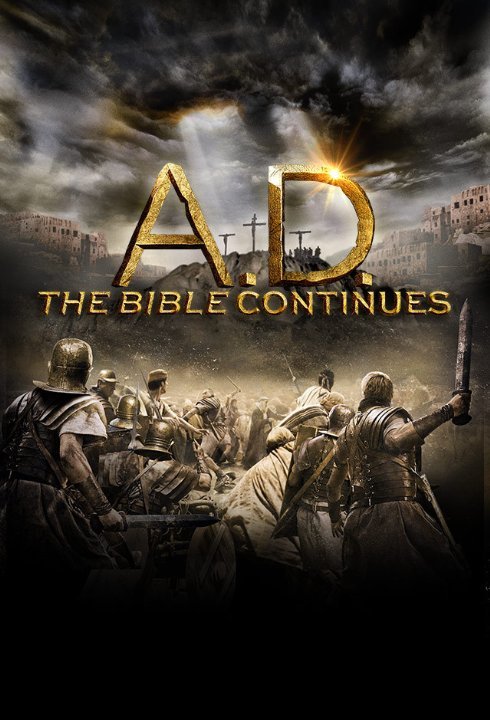Season 1 Episode 3
Content:
(CCC, BBB, VV, S, A, M) Very strong, Jesus centered, miracle working, Holy Spirit filled Christian, biblical worldview in contrast to the self-serving humanist authorities in power; no foul language; lots of violence, including guards at the tomb are strangled, one guard is killed with a sword from the back through the chest, people have their throats cut, riots, beatings of Peter and John; Pilate suggests his wife go to bed with him and several other similar mild sexual suggestions; no explicit nudity and belly dancers are clothed but do show some cleavage; wine; no smoking or drugs; and, tensions between Jewish zealots, Christians and Roman and Jewish authorities.
Episodes: Season Overview
More Detail:
The episode starts asking the question, where is the body of Jesus and reaffirms that Jesus appeared to the disciples and told them to wait in Jerusalem until they receive the Holy Spirit. The Jewish and Roman authorities are trying hard to cover up any suggestion that Jesus fulfilled the messianic prophecies in Isaiah, in particular rising from the dead. However, their attempts to suppress information about the missing body not only fail but also are quite violent. Pilates kills the guards from the tomb by strangling them and kills the guard who told him by running him through with the sword.
Other attempts to get rid of the information fail. Also, Caiaphas tries hard to cover up the situation, but Pilate is on to Caiaphas’ duplicity.
Herod, meanwhile, is upset the Romans have increased their presence in Jerusalem. To show his power, Pilate goes into the temple on Pentecost the same day the Zealots are planning to assassinate the Romans and, of course, the same day that the apostles experience the coming of the Holy Spirit and his power.
It should be noted there are some missing elements in this scene, which prefigures what the Romans did in A.D. 70. The reason the Jews in 70 A.D. got upset with the Romans going into the temple is because the Roman banners had representations on them that the Jews considered idolatry. This led to the Jewish rebellion and the destruction of the temple. Here in this episode, the Romans aren’t carrying banners, and, at the time, they could go into the Court of the Gentiles, but it’s unclear in Episode 3 how far they go into the temple.
At Pentecost, when Peter suggests they pray, they pray the Lord’s Prayer over and over, louder and louder, in contrast to Jesus’ words not to use repetition. This, of course, is a denominational difference. However, the appearing of the Holy Spirit is absolutely fantastic.
Another difficulty with this episode is the diversity of the apostles. Diversity in some circumstances is very good, but it’s important to remember that the early Christians were Jewish, and Judaism is racially transmitted by order of God. So, the diversity here doesn’t make much sense.
Whatever your opinion, the program does emphasize the lordship of Jesus, His resurrection, the outpouring of the Holy Spirit and the Spirit-filled disciples healing the lame and going with boldness into the community. Of course, Peter’s great sermon on Pentecost would have been a nice addition. Episode 3 is worth watching, but MOVIEGUIDE® urges you to read the Book of Acts to get the rest of the story.


 - Content:
- Content: 





